#IoT infrastructure
Explore tagged Tumblr posts
Text
MeshTek’s Vision: Empowering IoT with Bluetooth Mesh Networking
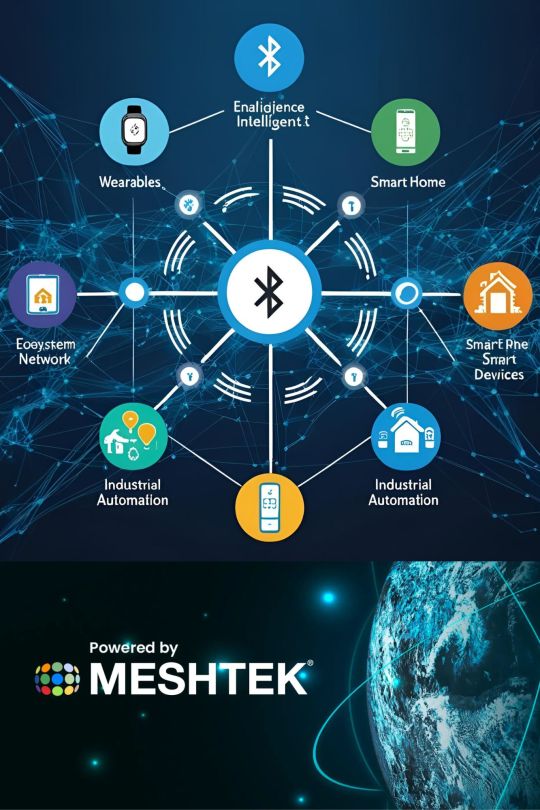
MeshTek’s robust Bluetooth Mesh Networking ecosystem—seamlessly linking smart homes, wearables, industrial automation, and connected devices into one intelligent grid. It illustrates how MeshTek empowers secure, low-energy, and scalable communication across complex environments, enabling real-time control, optimized performance, and unmatched flexibility. Built to support everything from smart devices to enterprise-level automation, MeshTek’s platform is at the heart of next-gen IoT transformation.
#Bluetooth Mesh Networking#MeshTek#smart automation#connected devices#industrial IoT#IoT ecosystem#smart home network#IoT infrastructure#wearable integration#scalable IoT platform#low-energy communication#real-time control#IoT app development#MeshTek technology#intelligent automation
1 note
·
View note
Text
Exploring the Future of IoT | Internet of Things
Internet of Things (IoT) has already transformed the way we perceive and interact with technology connecting everyday objects to the digital world. As we navigate through a rapidly evolving technological landscape it becomes crucial to delve deeper into the future of IoT and the endless possibilities it holds. Let’s explore the exciting advancements and emerging trends that will shape the future…
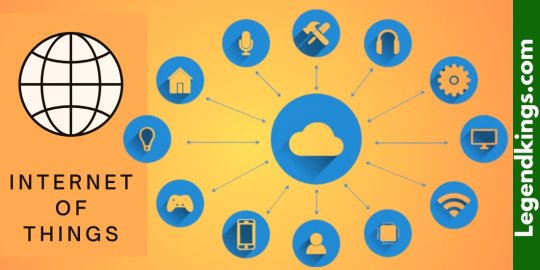
View On WordPress
#connected devices#Data Analytics#Emerging IoT Technologies#Future Technology#Industrial IoT#IoT Applications#IoT Automation#IoT Connectivity#IoT Data Privacy#IoT Ecosystem#IoT in Agriculture#IoT in Healthcare#IoT Industry Insights#IoT Infrastructure#IoT Innovations#IoT Security#IoT Sensors#IoT Sustainability#IoT Trends#Smart Homes
0 notes
Text
Global IoT Infrastructure Market Is Estimated To Witness High Growth Owing To Rising Adoption of Smart Technology
The global IoT infrastructure market is estimated to be valued at US$ 15 billion in 2016 and is expected to exhibit a CAGR of 25% over the forecast period, as highlighted in a new report published by Coherent Market Insights. Market Overview: IoT infrastructure refers to the interconnected system of devices, sensors, software, and services that enable the exchange of data and communication between physical objects or "things". This infrastructure plays a crucial role in enbling the implementation of smart technologies and applications across various industries. The advantages of IoT infrastructure are numerous. It allows businesses to collect and analyze real-time data, resulting in improved decision-making capabilities and operational efficiency. It also enables predictive maintenance, remote monitoring, and enhanced customer experiences. The need for such products associated with the market has been driven by the increasing demand for automation, connectivity, and data-driven insights. Market Key Trends: One key trend in the IoT infrastructure market is the growing adoption of smart cities. Governments and urban planners are increasingly leveraging IoT infrastructure to improve city operations, enhance citizen services, and ensure sustainable development. For example, cities are implementing sensor-based smart parking systems to alleviate traffic congestion and reduce pollution. The integration of various IoT devices and platforms allows cities to efficiently manage resources and optimize energy consumption. PEST Analysis: - Political: Governments worldwide are prioritizing digital transformation initiatives, which facilitate the growth of IoT infrastructure. Proactive government policies and regulations promoting smart initiatives drive the market growth. - Economic: The economic advantages offered by IoT infrastructure, such as cost savings and increased productivity, contribute to its adoption across various industries. The reduced costs associated with maintenance and operations drive market growth. - Social: The increasing consumer preference for connected devices and smart homes fuels the demand for IoT infrastructure. The growing awareness about energy conservation and sustainability also drives market growth. - Technological: The advancements in cloud computing, big data analytics, and wireless communication technologies are key enablers of IoT infrastructure. The availability of low-cost sensors and improved connectivity options further propel market growth. Key Takeaways: Paragraph 1: The global Iot Infrastructure Market Growth is expected to witness high growth, exhibiting a CAGR of 25% over the forecast period, due to increasing adoption of smart technologies. The demand for connected devices, data-driven decision-making, and improved customer experiences are driving market growth. Paragraph 2: In terms of regional analysis, North America is expected to dominate the IoT infrastructure market due to the presence of prominent technology companies and early adoption of IoT applications. However, Asia Pacific is anticipated to be the fastest-growing region, driven by rapid urbanization, increasing government initiatives, and the rising adoption of smart city projects. Paragraph 3: Key players operating in the global IoT infrastructure market include CISCO Systems, INC., Amazon Web Services Inc., Accenture PLC, IBM Corporation, Microsoft Corporation, SAP SE, Oracle Corporation, Intel Corporation, PTC Inc., and AT&T Inc. These players focus on collaborations, partnerships, and product innovations to strengthen their market position and cater to the growing demand for IoT infrastructure.

0 notes
Text
IoT Infrastructure Market: Emerging Trend, Top Companies, Company Demand, Business Review and Regional Analysis by 2028
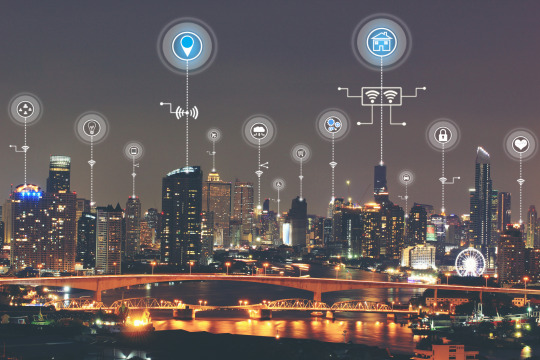
The Internet of Things (IoT) infrastructure market is witnessing significant growth and is at the forefront of technological advancements. IoT infrastructure refers to the interconnected network of devices, sensors, software, and communication technologies that facilitate seamless data exchange and communication between devices and systems. As the world becomes increasingly digitized and connected, the demand for robust and efficient IoT infrastructure is on the rise.
Emerging Trend
One of the emerging trends in the IoT Infrastructure Market is the integration of artificial intelligence (AI) and machine learning (ML) technologies. AI and ML enable IoT devices to analyze and interpret data in real-time, leading to more intelligent and automated decision-making processes. This trend is particularly relevant in industries like healthcare, manufacturing, and smart cities, where real-time insights and predictive analytics are essential.
Another significant emerging trend is the convergence of IoT and 5G technology. The deployment of 5G networks provides higher bandwidth, lower latency, and increased capacity, which is crucial for supporting the massive data traffic generated by IoT devices. The combination of IoT and 5G opens up new possibilities for innovative IoT applications and solutions, such as autonomous vehicles and smart infrastructure.
Moreover, edge computing is gaining traction as an essential trend in the IoT infrastructure for market. Edge computing involves processing data closer to the source, reducing latency and bandwidth consumption. This approach is particularly important for IoT applications that require real-time responses, such as industrial automation and critical healthcare systems.
Top Companies and Company Demand
Several top companies are leading the IoT Infrastructure Market, contributing to its growth and development. These companies are at the forefront of providing cutting-edge IoT solutions and technologies to meet the growing demand. Some of the top companies in the IoT infrastructure for market include:
Cisco Systems, Inc.: Cisco is a global leader in networking and communication solutions, offering a wide range of IoT infrastructure products and services.
IBM Corporation: IBM provides IoT platform solutions and services, enabling enterprises to connect, manage, and analyze IoT data for actionable insights.
Intel Corporation: Intel is a leading semiconductor company, supplying processors, chips, and IoT connectivity solutions for various IoT applications.
Microsoft Corporation: Microsoft offers a comprehensive suite of IoT solutions, including Azure IoT, to help businesses connect, monitor, and manage IoT devices and data.
Siemens AG: Siemens is a key player in the industrial IoT space, providing IoT solutions for manufacturing, energy, transportation, and more.
Amazon Web Services (AWS): As a subsidiary of Amazon, AWS offers a robust IoT platform that enables seamless device connectivity and data management in the cloud.
Huawei Technologies Co., Ltd.: Huawei is a significant player in the IoT infrastructure for market, offering a wide range of IoT solutions, including platforms, chips, and connectivity solutions.
The demand for IoT infrastructure is driven by the increasing adoption of IoT technologies across industries to improve operational efficiency, enhance customer experience, and drive innovation.
Business Review
The IoT Infrastructure Market is highly competitive and dynamic, with companies continuously striving to stay ahead in the race. Businesses are investing in research and development to develop innovative IoT solutions, improve connectivity, and enhance security measures.
Strategic partnerships and collaborations are also prevalent in the market as companies seek to expand their product portfolios and geographic reach. By joining forces with other industry players, companies can combine their expertise and resources to develop comprehensive and integrated IoT solutions.
Regional Analysis by 2028
In terms of regional analysis, North America is expected to dominate the IoT infrastructure for market due to its early adoption of IoT technologies and the presence of several prominent tech companies. However, the Asia-Pacific region is anticipated to witness rapid growth during the forecast period. This growth can be attributed to the increasing investments in IoT technologies and the rapid expansion of smart cities and industrial IoT applications in countries like China and India.
The European region is also expected to show significant growth in the IoT infrastructure for market, driven by the adoption of IoT technologies in industries such as healthcare, transportation, and agriculture.
The IoT Infrastructure Market is experiencing rapid growth and transformative trends that are shaping the future of connectivity and data exchange. The integration of AI and ML, the convergence of IoT and 5G, and the rise of edge computing are among the emerging trends driving innovation in the market. Top companies are playing a pivotal role in meeting the growing demand for IoT solutions and technologies. As businesses continue to invest in R&D and strategic partnerships, the IoT infrastructure for market is set to flourish and revolutionize industries across the globe by 2028.
#Information and Communication Technology#IoT Infrastructure#IoT Infrastructure Market#IoT Infrastructure Market Size
0 notes
Text

#Technology Unveiling the Future of Text Analysis: Trendy Topic Modeling with BERT https://www.analyticsvidhya.com/blog/2023/07/text-analysis-topic-modeling-with-bert/?utm_source=dlvr.it&utm_medium=tumblr
15 notes
·
View notes
Text
The Future of EV Charging Lies in IoT Integration
Electric vehicles (EVs) are no longer a novelty—they’re a necessity. But the future of clean mobility depends on smart, efficient charging infrastructure. That’s where IoT comes in. By integrating the Internet of Things into EV charging stations, we’re unlocking a new era of energy management, automation, and user experience.
⚡ IoT turns charging stations from static outlets into intelligent, connected hubs.
📡 𝐇𝐞𝐫𝐞’𝐬 𝐡𝐨𝐰 𝐈𝐨𝐓 𝐢𝐬 𝐭𝐫𝐚𝐧𝐬𝐟𝐨𝐫𝐦𝐢𝐧𝐠 𝐄𝐕 𝐂𝐡𝐚𝐫𝐠𝐢𝐧𝐠 𝐢𝐧 𝟐𝟎𝟐𝟓:
✅ 𝐑𝐞𝐚𝐥-𝐓𝐢𝐦𝐞 𝐃𝐚𝐭𝐚 𝐚𝐧𝐝 𝐔𝐬𝐚𝐠𝐞 𝐌𝐨𝐧𝐢𝐭𝐨𝐫𝐢𝐧𝐠 Track station status, energy usage, grid demand, and availability in real time—for drivers, providers, and grid operators alike.
✅ 𝐒𝐦𝐚𝐫𝐭 𝐆𝐫𝐢𝐝 𝐈𝐧𝐭𝐞𝐠𝐫𝐚𝐭𝐢𝐨𝐧 IoT-enabled chargers communicate with the grid, optimizing energy distribution, enabling demand response, and supporting renewable sources.
✅ 𝐑𝐞𝐦𝐨𝐭𝐞 𝐃𝐢𝐚𝐠𝐧𝐨𝐬𝐭𝐢𝐜𝐬 & 𝐌𝐚𝐢𝐧𝐭𝐞𝐧𝐚𝐧𝐜𝐞 IoT sensors detect faults, wear, or damage before breakdowns happen—ensuring more uptime and better reliability.
✅ 𝐏𝐞𝐫𝐬𝐨𝐧𝐚𝐥𝐢𝐳𝐞𝐝 𝐔𝐬𝐞𝐫 𝐄𝐱𝐩𝐞𝐫𝐢𝐞𝐧𝐜𝐞 Seamless mobile integration allows drivers to book charging slots, receive live updates, and get loyalty perks—customized to behavior.
✅ 𝐃𝐚𝐭𝐚-𝐃𝐫𝐢𝐯𝐞𝐧 𝐍𝐞𝐭𝐰𝐨𝐫𝐤 𝐄𝐱𝐩𝐚𝐧𝐬𝐢𝐨𝐧 IoT data helps providers identify high-demand locations, peak times, and user patterns—guiding smarter expansion of EV infrastructure.
📌 𝐓��𝐞 𝐁𝐢𝐠 𝐏𝐢𝐜𝐭𝐮𝐫𝐞: IoT isn’t just making EV charging smarter—it’s making it sustainable, scalable, and driver-first. In the electrified future, connectivity is just as critical as capacity.
🔗 Read More: https://technologyaiinsights.com/
📣 About AI Technology Insights (AITin): AI Technology Insights (AITin) is the fastest-growing global community of thought leaders, influencers, and researchers specializing in AI, Big Data, Analytics, Robotics, Cloud Computing, and related technologies. Through its platform, AITin offers valuable insights from industry executives and pioneers who share their journeys, expertise, success stories, and strategies for building profitable, forward-thinking businesses. 📍 𝐀𝐝𝐝𝐫𝐞𝐬𝐬: 1846 E Innovation Park DR, Ste 100, Oro Valley, AZ 85755 📧 𝐄𝐦𝐚𝐢𝐥: [email protected] 📲 𝐂𝐚𝐥𝐥: +1 (845) 347-8894
0 notes
Text
Bridging Smart City Visions and Budgets with a Construction Cost Estimating Service
As cities worldwide shift toward smarter, more sustainable development, the idea of a "smart city" has moved from aspiration to implementation. These urban environments are designed to leverage data, technology, and intelligent infrastructure to improve livability and efficiency. However, turning smart city concepts into real, functional spaces requires more than innovation—it requires precise financial planning. A construction cost estimating service plays a critical role in aligning bold urban visions with practical, achievable budgets.
Understanding the Smart City Framework
Smart cities are built on interconnected systems that include digital infrastructure, energy-efficient buildings, intelligent transportation, and real-time public services. Examples include sensor-based lighting, integrated data platforms, automated waste management, and green infrastructure.
Each element has financial implications, from high-tech installations to long-term maintenance. Cost estimating services help translate these visionary features into actionable plans by forecasting expenses across the project lifecycle.
Challenges of Budgeting for Smart Cities
Smart city projects pose several budgeting challenges:
Technology evolution: Rapid innovation can make systems obsolete mid-project.
Cross-sector integration: Combining infrastructure, software, and construction raises cost complexity.
Data infrastructure: Building digital backbones adds another layer of cost beyond traditional construction.
Long-term sustainability goals: Energy systems and green design often involve higher initial investment.
These challenges make it essential to include experienced cost estimators early in the planning process to anticipate and manage financial complexity.
Benefits of a Construction Cost Estimating Service in Smart City Projects
Translating Vision into Numbers
Convert abstract smart city features into quantifiable line items.
Include software, hardware, and systems integration costs.
Map budgets to both current needs and future scalability.
Balancing Innovation with Cost
Assess value versus cost for smart features like IoT devices or automated systems.
Identify areas where innovation yields the highest return.
Prevent overinvestment in tech that doesn't improve efficiency or performance.
Integrating Infrastructure and Digital Layers
Estimate costs for physical and digital components together.
Include broadband, sensor networks, and control centers in construction budgets.
Forecast long-term operational costs such as data storage, upgrades, and monitoring.
Scenario Modeling for Smart Alternatives
Compare options like smart HVAC vs. conventional systems.
Evaluate solar energy integration versus grid reliance.
Analyze smart parking systems against traditional parking infrastructure.
Creating Adaptable Budgets
Smart cities evolve constantly. What’s innovative today may need updating tomorrow. A construction cost estimating service develops flexible budgets that adapt to:
Phased implementations
Future technology upgrades
Changing regulations or codes
Shifting funding sources
This adaptive budgeting ensures that smart city initiatives stay on course—even in a changing environment.
Collaborating Across Stakeholders
Smart city developments involve a mix of partners:
Government agencies
Private tech firms
Utility companies
Community stakeholders
Cost estimators provide a unified financial picture that all stakeholders can understand. This helps build consensus and trust, especially when projects are funded by public-private partnerships.
Risk Management in Smart Infrastructure
The technical complexity of smart cities increases financial risk. A single system failure could disrupt multiple services. Cost estimators manage these risks by:
Including redundancy costs for critical systems
Building in cybersecurity considerations
Accounting for maintenance, system support, and service contracts
This forward-thinking approach supports not just the build-out of smart infrastructure, but its sustainable performance.
Cost Planning for Sustainable Smart Design
Sustainability is a pillar of smart cities, encompassing:
Energy-efficient building design
Renewable energy integration
Low-impact materials and construction
Green transportation systems
Estimating services align sustainability goals with realistic budgets by:
Forecasting ROI for sustainable features
Incorporating incentives, rebates, and tax credits
Calculating lifecycle cost savings versus upfront spending
Linking Digital Twin Technology with Budget Planning
An emerging tool in smart cities is the "digital twin"—a real-time virtual model of the physical city. These systems help manage infrastructure more efficiently but come at a significant cost.
Cost estimators help:
Quantify the setup and operational cost of digital twins
Align them with existing construction and infrastructure budgets
Model upgrade paths and maintenance needs
This integration ensures the technology’s benefits are achieved without undermining financial feasibility.
Planning for Scalability and Future Growth
Smart cities are designed to grow. Estimators help projects prepare for future demands by:
Including scalable systems in original budgets
Creating allowances for future construction phases
Modeling per-capita infrastructure costs based on projected growth
This long-term outlook prevents underinvestment and supports urban resilience.
Conclusion
Smart cities represent the future of urban living—data-driven, energy-efficient, and responsive to the needs of their populations. But without detailed financial planning, these projects risk becoming too expensive, overly complex, or disconnected from reality.
A construction cost estimating service brings structure and clarity to the process. By accurately forecasting the cost of innovation, integration, and long-term performance, it enables urban planners, engineers, and policymakers to turn smart city concepts into budget-aligned action. In a world where cities must be both intelligent and sustainable, the foundation of success begins with smart estimating.
#smart city#cost estimating#budgeting#urban planning#digital infrastructure#IoT construction#energy efficiency#green building#public-private#lifecycle cost#sustainable urbanism#infrastructure cost#data networks#smart HVAC#digital twins#city design#modular systems#cost forecasting#stakeholder alignment#smart mobility#green infrastructure#urban innovation#adaptive budgets#risk management#maintenance cost#cost modeling#urban resilience#construction pricing#funding strategies#scalable systems
0 notes
Text
Cisco Research Highlights Major Infrastructure Shift with AI Integration
Cisco’s AI-Powered Network Revolution: Transforming Infrastructure for the Future
In a rapidly evolving technological landscape, Cisco is spearheading a major transformation in network infrastructure through AI integration. Unlike conventional AI applications that focus on consumer products or software automation, Cisco’s approach revolves around building an “AI-native infrastructure” designed to meet the complex demands of enterprise networks and next-gen AI workloads. This shift is not just a technological upgrade but a strategic move to redefine how businesses operate, secure their data, and deliver seamless digital experiences worldwide. This article explores Cisco’s vision, innovations, and the broad impact of this infrastructure revolution.
Table of Contents
Redefining Network Architecture with AI-Native Foundations
AI-Driven Security: Protecting the Future of Enterprise Networks
Enhancing Network Visibility and Automation Through AI Operations
Cisco’s AI Infrastructure Investment
Empowering Businesses and Communities Worldwide
The Path Forward for AI-Enabled Infrastructure
Quotes:
FAQs:
Redefining Network Architecture with AI-Native Foundations
Cisco’s groundbreaking research highlights the urgency of rebuilding network infrastructure to support the exponential growth of AI, IoT, and cloud applications. Rather than merely adding AI tools on top of existing systems, Cisco is pioneering networks architected from the ground up to handle the intense compute, bandwidth, and latency requirements of AI workloads. This includes the development of custom Ethernet fabrics optimized for AI/ML clusters using NVIDIA and AMD GPUs, enabling faster data throughput and real-time analytics.
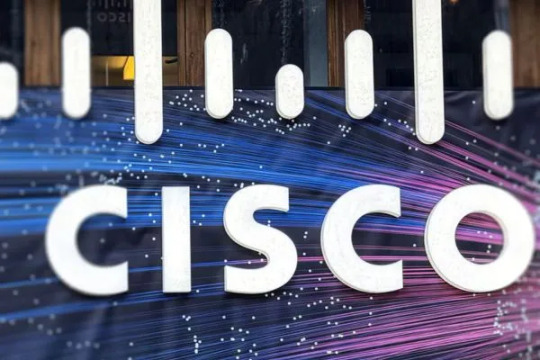
The initiative began as early as 2023 when Cisco started investing heavily in research and partnerships aimed at designing hardware and software ecosystems that would not only support but accelerate AI adoption. By 2025, Cisco publicly launched a suite of AI-native network products, showcasing how networks can dynamically adapt to data flows, improve reliability, and automate routine tasks.
This architecture matters because traditional networks struggle under the weight of modern AI and cloud demands, often causing bottlenecks and security vulnerabilities. Cisco’s AI-native infrastructure aims to eliminate these challenges by offering scalability, resilience, and intelligent automation, which in turn drives business efficiency and innovation.
AI-Driven Security: Protecting the Future of Enterprise Networks
Security is a core pillar of Cisco’s AI strategy. As cyber threats grow increasingly sophisticated, Cisco leverages AI and machine learning to detect anomalies, prevent breaches, and analyze encrypted traffic without compromising privacy. Their AI-powered security platforms use behavioral analysis to identify threats that traditional systems might miss and enable automatic remediation, reducing response times drastically.
Cisco introduced this integrated security approach alongside their AI-native infrastructure, positioning it as an essential tool for enterprises transitioning to hybrid and multi-cloud environments. This strategy aligns with Cisco’s Zero Trust architecture, which assumes breaches will happen and continuously validates every device and user.
This AI-empowered security not only protects sensitive data but also ensures business continuity, making it a critical enabler for companies worldwide to embrace digital transformation with confidence. It is particularly beneficial for industries like finance, healthcare, and government sectors where data protection is paramount.
Read More : Cisco Research Highlights Major Infrastructure Shift with AI Integration
#Cisco#AI integration#network infrastructure#artificial intelligence#enterprise networks#AI-powered security#digital transformation#cloud computing#IoT#AI operations#network automation#cybersecurity#tech innovation#IT infrastructure#machine learning#predictive analytics#global connectivity#infrastructure modernization#AI in business#future of networking
0 notes
Text
Smart Building Technologies: AI & IoT Solutions for Modern Construction
Explore how smart building technologies are revolutionizing the construction industry in Philadelphia. With AI in construction management and IoT in building automation, companies are enhancing efficiency, safety, and sustainability in every phase of a project. Discover how AI-driven construction safety solutions are helping to prevent accidents and improve decision-making on-site. From high-rise developments to smart infrastructure, these innovations are shaping the future of urban building. Learn how adopting smart building technologies can future-proof your projects and ensure compliance with modern standards in one of America's most competitive construction markets.
#smart building technologies in Philadelphia construction#AI in construction management in Philadelphia#IoT in building automation systems Philadelphia#AI-driven construction safety tools in Philadelphia#Philadelphia smart construction technologies#advanced IoT solutions for building automation Philadelphia#artificial intelligence in Philadelphia building projects#construction safety technology for Philadelphia contractors#smart infrastructure development in Philadelphia#energy-efficient smart buildings using AI and IoT Philadelphia
0 notes
Text
How 5G Networks Are Enabling Smart Cities Around the World
Introduction: The Rise of 5G and Smart Cities With the global rollout of 5G networks accelerating in 2025, cities worldwide are harnessing this ultra-fast connectivity to develop smart urban environments. Smart cities use digital technologies to improve infrastructure, sustainability, and residents’ quality of life. The transformative power of 5G lies in its ability to connect billions of…
#5G connectivity#5G networks#city automation#future technology#global smart cities#IoT technology#smart cities#smart city infrastructure#sustainable cities#urban innovation
0 notes
Text
Connected Intelligence: Powering Tomorrow with Bluetooth Mesh
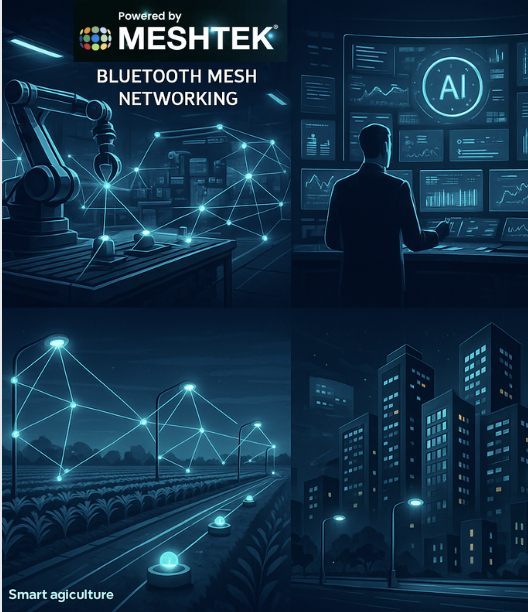
MeshTek’s advanced Bluetooth Mesh Networking seamlessly integrates across diverse sectors — from industrial automation and AI-driven operations to smart agriculture and urban lighting. Real-time data flow, secure communication, and synchronized control across a decentralized, energy-efficient IoT network. Designed for scalability and precision, MeshTek’s platform enables smarter environments through robust, low-latency connectivity.
#Bluetooth Mesh Networking#Smart Lighting#Industrial Automation#AI Connectivity#Smart Agriculture#MeshTek IoT#Edge Devices#Real-Time IoT Control#Scalable Mesh Network#IoT Infrastructure
1 note
·
View note
Text
Secure Your IoT Devices with Cloud Solutions
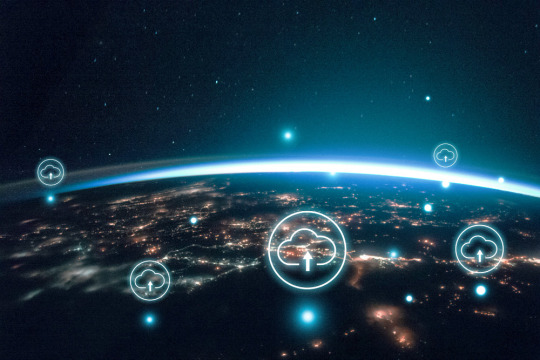
The Internet of Things (IoT) has transformed how businesses gather data, automate processes, and make decisions. However, managing the full IoT lifecycle—from device onboarding to retirement—remains complex and resource-intensive. Each phase of an IoT deployment demands scalability, security, and cost-efficiency, and without a centralized management approach, businesses can quickly become overwhelmed. That's why understanding the importance of cloud support in managing IoT infrastructure is essential.
In our latest blog, we break down why cloud services are critical to every stage of the IoT lifecycle—read it here: Why Cloud Managed Services Are Critical for IoT Device Lifecycle Management.
If you're deploying or scaling IoT networks, cloud managed services can help streamline operations and improve ROI.
The Challenge of IoT Lifecycle Management
IoT devices don’t operate in a vacuum. They require continuous monitoring, regular updates, troubleshooting, and ultimately decommissioning. The larger the deployment, the greater the complexity. Traditional IT teams may not have the bandwidth or tools to manage these demands effectively, especially when systems span multiple geographies and vendors.
In the absence of a unified platform, businesses often struggle with fragmented systems, inconsistent security protocols, and increased operational costs. The solution? A managed cloud-based service framework that centralizes control and visibility across the entire IoT lifecycle.
Why Cloud Managed Services Make a Difference
Cloud managed services offer a cohesive and scalable environment where businesses can monitor, manage, and optimize IoT device fleets in real-time. These services provide several key benefits:
Scalability: As your IoT network grows, cloud platforms automatically adjust resources, avoiding costly infrastructure upgrades.
Security: Built-in compliance tools and encryption protocols help protect sensitive data throughout transmission and storage.
Automation: Routine tasks such as firmware updates, diagnostics, and alerts can be automated, reducing the risk of human error.
Cost Efficiency: Pay-as-you-go models ensure that businesses only pay for what they use, keeping operational costs transparent and predictable.
By integrating cloud managed services into your IoT strategy, you not only reduce technical debt but also gain the agility needed to innovate faster.
Real-World Impact: Faster Time to Market and Higher ROI
One of the most significant advantages of managed cloud environments is accelerated deployment. Provisioning hundreds or thousands of devices can be done in minutes instead of days, allowing businesses to bring their solutions to market more quickly. Additionally, centralized logging and analytics enable faster decision-making, which directly impacts bottom-line performance.
Case in point: a manufacturing company that shifted to a cloud-managed approach for their IoT-driven production line saw a 30% reduction in downtime and a 25% increase in overall system reliability. The cost savings and efficiency gains far outweighed the initial investment in managed services.
Integrating with Emerging Technologies
Cloud managed services also offer the flexibility to incorporate new technologies like machine learning, edge computing, and predictive analytics. These integrations can enhance the value of your IoT deployment by identifying patterns, predicting failures, and automating maintenance tasks.
For example, using AI algorithms to process sensor data in the cloud allows for proactive equipment servicing, reducing the risk of costly breakdowns. These capabilities are increasingly becoming non-negotiable for businesses aiming to remain competitive in a rapidly evolving digital landscape.
Conclusion
Managing an IoT environment requires more than just robust hardware—it demands a strategic approach that leverages the scalability, security, and automation of the cloud. Cloud managed services empower organizations to simplify IoT operations, reduce overhead, and focus on what matters most: driving innovation and growth.
Whether you're just starting your IoT journey or looking to optimize an existing deployment, exploring managed cloud solutions is a crucial step.
#cloud services#IoT#Network Infrastructure#Cloud Managed Services#cloud service providers#Teleglobal International
0 notes
Text
Network Operating Systems Market: Trends, Innovations, and Future Outlook
In today’s digital-first world, where enterprises and service providers rely on highly connected infrastructures, the role of Network Operating Systems (NOS) has become more critical than ever. From managing internal communications to supporting global cloud-based applications, NOS platforms are at the core of networking architecture. As demands grow, NOS solutions must evolve—emphasizing…

View On WordPress
#a network operating system#ai#artificial intelligence#best network os#business#Business Intelligence#computer network operating system#Digital Transformation#edge computing#Information Security#Information Technology#iot#IT Infrastructure#Machine Learning#ML#Network Automation#network innovation#network management in operating system#Network Monitoring#Network Operating Systems#network scalability#Network Security#NOS#smart networks
0 notes
Text
📊 Piezoelectric Pressure Sensors Market Set to Reach $6.0 Billion by 2035, Driven by Automotive & Healthcare Innovations
The Piezoelectric Pressure Sensors Market is projected to grow from $2.9 billion in 2024 to $6.0 billion by 2035, with a CAGR of 6.9% during the period from 2024 to 2035.
Detailed Analysis - https://datastringconsulting.com/industry-analysis/piezoelectric-pressure-sensors-market-research-report
These sensors are essential in various applications including automotive, healthcare, aerospace & defense, and oil & gas. This report identifies key growth and revenue expansion opportunities across technology types, applications, output, structure, and product types, alongside detailed revenue forecasts.
🏅 Market Leadership & Competitive Landscape
The Piezoelectric Pressure Sensors market is competitive, with leading players such as:
PCB Piezotronics
Honeywell International Inc.
Kistler Instrumente AG
Dytran Instruments Inc.
TE Connectivity
Sensata Technologies Inc.
Siemens AG
Endevco Corporation
RION Co. Ltd
Metrix Instrument Co. LLC
ASC Sensors
Meggitt Sensing Systems
These industry leaders drive market expansion by focusing on automotive applications, advanced healthcare monitoring, and integration with smart devices.
🚀 Key Growth Drivers & Opportunities
Several key trends are expected to propel growth in the Piezoelectric Pressure Sensors market, including:
Enhanced automotive applications, particularly in electric vehicles (EVs) and autonomous driving systems
Smart city infrastructure development, where sensors are critical for various monitoring and control systems
Advancements in healthcare monitoring systems, driving demand for highly accurate and reliable sensors for wearables and medical diagnostics
Integration into smart devices and Internet of Things (IoT) applications, expanding market opportunities across industries
Key regions, such as the U.S., China, Japan, Germany, and South Korea, are expected to remain major demand hubs, offering lucrative opportunities.
🌍 Regional Shifts & Evolving Supply Chains
The North America and Europe regions are the most active in the Piezoelectric Pressure Sensors market, driven by high demand in automotive and healthcare sectors. However, challenges such as:
High manufacturing costs
Technical limitations in sensor integration and calibration
are influencing market dynamics. As a result, the supply chain, from raw material procurement and component manufacturing to assembly and integration, is expected to evolve.
Emerging markets, such as India, Brazil, and South Africa, present significant opportunities for revenue diversification and TAM expansion, as demand for piezoelectric sensors grows in these regions.
🧠 About DataString Consulting
DataString Consulting is a premier provider of market research and business intelligence solutions, serving both B2B and B2C markets. Our team of industry experts provides bespoke market research to meet specific business objectives, backed by over 30 years of combined experience in strategy consulting, market analysis, and opportunity assessments.
Our services include:
Custom Market Research Reports
Strategic Consulting for market penetration
Opportunity Assessments for targeted growth
Market Forecasting and Trend Analysis
#Piezoelectric Pressure Sensors Market#Automotive Pressure Sensors#Healthcare Monitoring Sensors#Smart City Infrastructure#Advanced Pressure Sensors#Electric Vehicle Sensors#IoT Pressure Sensors#Industrial Pressure Sensors#Sensors for Aerospace & Defense#Global Sensor Market Forecast#Emerging Markets for Pressure Sensors
0 notes
Text
Beyond the Buzz: How IoT Redefines Business Operations

Moving from Hype to Reality
IoT has moved from being a futuristic idea to a practical solution that businesses use daily to improve operations and achieve sustainable growth. Though much of the discussion around IoT is about its potential, the real value that it presents is in how companies can use the technology to solve real-world problems.
Today, IoT is no longer a buzzword; it’s a necessity for any business looking to remain competitive and agile in a dynamic global environment. With its power to integrate devices, data, and processes, IoT helps businesses achieve efficiencies, improve customer satisfaction, and create new revenue streams. In this blog post, we explore how IoT is changing business operations across industries and what companies need to do to maximize its potential.
How Tudip Technologies Redefines IoT Solutions
Tudip Technologies empowers businesses with IoT solutions that tackle complex operational challenges and drive measurable outcomes.
Our Specialized Approach:
Edge Computing Integration: Enabling faster data processing closer to devices for real-time responsiveness.
IoT Ecosystem Design: Creating scalable ecosystems that adapt to changing business needs.
Sustainability-Focused Solutions: Tailoring IoT frameworks that align with environmental goals.
Example: Tudip partnered with a logistics provider to implement IoT-powered edge analytics, reducing data processing times by 60% and improving delivery accuracy across global operations.
Key Takeaways: Turning IoT Into Operational Strength
Invest in Scalable Solutions: Ensure your IoT systems can grow alongside your business needs.
Prioritize Security: Robust cybersecurity measures arToday, IoT is no longer a buzzword; it’s a necessity for any business looking to remain competitive and agile in a dynamic global environment. With its power to integrate devices, data, and processes, IoT helps businesses achieve efficiencies, improve customer satisfaction, and create new revenue streams. In this blog post, we explore how IoT is changing business operations across industries and what companies need to do to maximize its potential.
Redefining Operational Efficiency with IoT
1. Predictive Analytics: Smarter Urban Operations with IoT
IoT is revolutionizing energy management by integrating renewable energy sources into business operations. Smart systems analyze usage patterns and adjust power drawn from solar, wind, or traditional grids in real time.
Optimized Renewable Usage: IoT ensures renewable energy is used efficiently by monitoring supply-demand gaps.
Grid Stability: Balances energy loads to prevent outages during peak hours.
Sustainability Goals: Helps businesses achieve net-zero emissions by prioritizing clean energy consumption.
Example: A technology campus integrated IoT in optimizing its solar energy consumption and reduced dependence on traditional grids by 40%, with a significant reduction in operational costs
2. Energy Management: Advancing Renewable Solutions
Predictive analytics powered by IoT is transforming urban infrastructure. Cities can now monitor critical assets like bridges, roads, and utilities in real time, ensuring timely maintenance and preventing costly failures.
Public Safety: Early detection of infrastructure stress minimizes risks to citizens.
Cost Efficiency: Avoiding large-scale repairs reduces budget overruns for municipalities.
Sustainability: Proactive maintenance extends the lifespan of assets, reducing waste.
3. Automation Excellence: Better Disaster Response Logistics
IoT-driven automation is transforming how disaster response occurs—getting aid to where it is needed, faster and more efficiently.
Real-Time Inventory Management: Monitors relief inventory and ensures its proper distribution to areas of greatest need.
Smart Transportation: Optimizes routes for rescue and supply vehicles during crises.
Collaboration Across Agencies: IoT systems enable seamless communication between response teams.
Example:In a recent hurricane, one global aid organization leveraged IoT-connected drones to survey damage and automate the delivery of supplies, resulting in a 50% faster response time.
Overcoming Common IoT Challenges
1. Integration of IoT with Existing Systems
One of the biggest hurdles businesses face is integrating IoT solutions with legacy systems. Compatibility issues can hinder seamless data exchange and functionality. Solution: Use a flexible IoT platform with built-in interoperability; make sure it provides APIs for smooth integration. Careful planning and phased implementation may also reduce disruptions to a minimum.
2. Data Security and Privacy
IoT ecosystems are all about continuous data gathering and transmission, which increases exposure to cyber threats. The security of sensitive information is the foundation of trust with stakeholders.
Solution: Implement robust encryption protocols, regularly update security measures, and educate employees on cybersecurity best practices.
3. Adapting to Rapid Technological Changes
The rapid rate of innovation in IoT can make it challenging for businesses to adapt to new developments and keep their systems current. Solution: Collaborate with technology providers that offer scalable solutions and ongoing support to adapt to emerging trends without overhauling existing systems.
How IoT Drives Operational Transformation
1. Enhancing Decision-Making with Real-Time Insights
IoT provides companies with real-time data that enables informed decision-making. Whether it is revising supply chain strategies or optimizing production schedules, IoT ensures that companies can act quickly and confidently.
Dynamic Adaptability: Businesses can change their strategies according to up-to-date information and stay responsive to market demand.
Improved Collaboration: IoT systems enable better communication across departments, enabling coordinated efforts.
2. Creating Value Through Customization
IoT’s ability to collect granular data allows businesses to tailor their offerings and services to meet specific customer needs. Personalization not only enhances user experience but also builds stronger customer relationships.
e non-negotiable in today’s interconnected world.
Focus on Outcomes: Use IoT to achieve specific goals, whether it’s reducing costs, enhancing customer satisfaction, or achieving sustainability targets.
Conclusion: Moving Beyond the Buzz
IoT has evolved into an indispensable solution, reshaping how businesses optimize operations and achieve sustainable growth. By addressing real-world challenges and delivering actionable insights, IoT enables companies to stay competitive and adaptive.
To fully realize the benefits of IoT, businesses must focus on integrating flexible solutions, safeguarding data, and aligning technology with strategic objectives. With the right approach, IoT becomes more than a technological innovation—it becomes a cornerstone of operational excellence and sustainable growth.
Click the link below to learn more about the blog Beyond the Buzz: How IoT Redefines Business Operations
https://tudip.com/blog-post/beyond-the-buzz-how-iot-redefines-business-operations/
#Tudip#IoT#Internet of Things#business operations#predictive analytics#automation#real-time data#edge computing#smart infrastructure#energy management#renewable energy#sustainability#operational efficiency#cybersecurity#data security#interoperability#digital transformation#scalability#AI-driven insights#machine learning#supply chain optimization#disaster response#smart cities#industrial IoT#connected devices#enterprise IoT#cloud computing#IoT platforms#remote monitoring#predictive maintenance
0 notes
Text
Smart Cities & Urban Computing: The Pulse of Our Urban Future.
Sanjay Kumar Mohindroo Sanjay Kumar Mohindroo. skm.stayingalive.in Explore how IoT sensors, data analytics, and simple tech transform urban structure, traffic flow, and energy use in smart, vibrant cities.
In our fast-changing urban life, simple tech is reshaping how our cities work. We now see a mix of small devices and clear data that make cities smart and liveable. The rise of connected…
#blog#Data Analytics#Energy Distribution#IoT Sensors#life#News#Sanjay Kumar Mohindroo#Smart Cities#technology#Traffic Management#travel#Urban Computing#Urban Infrastructure#writing
0 notes